Bollinger Bands Best Settings Strategy: Bounce Your Way Into 5-Step Profits

In this article, you will learn how to use the Bollinger Bands bounce trading strategy in day trading. This strategy uses two of the most popular trading indicators on the market, Bollinger Bands and RSI. They are used to simply find a price “bounce” that occurs during the main trend.
Is this your first time visiting Trading Strategy Guides (TSG)? First off, we want to thank you from the bottom of our hearts. If you are looking for something specific you can always head on over to our TSG Blog Articles Page. You can find nearly anything trading-related that you’re interested in.
If you’re new to trading. We highly recommend What Is Trading, our comprehensive guide to better understand financial markets. It’s a great beginner’s guide to get you started on your trading journey.
Table of Contents
Intro: Bollinger Bands Strategy
If you have been looking for a Bollinger Bands bounce trading strategy that works, you are going to want to pay special attention.
This special strategy teaches you how to read Bollinger Bands and it’s signals. You’ll also learn about Bollinger Bands squeeze, double Bollinger Bands Bounce Trading Strategy, Bollinger Bands secrets, and more. We also have training for the ADX Indicator.
Something that will look like this:
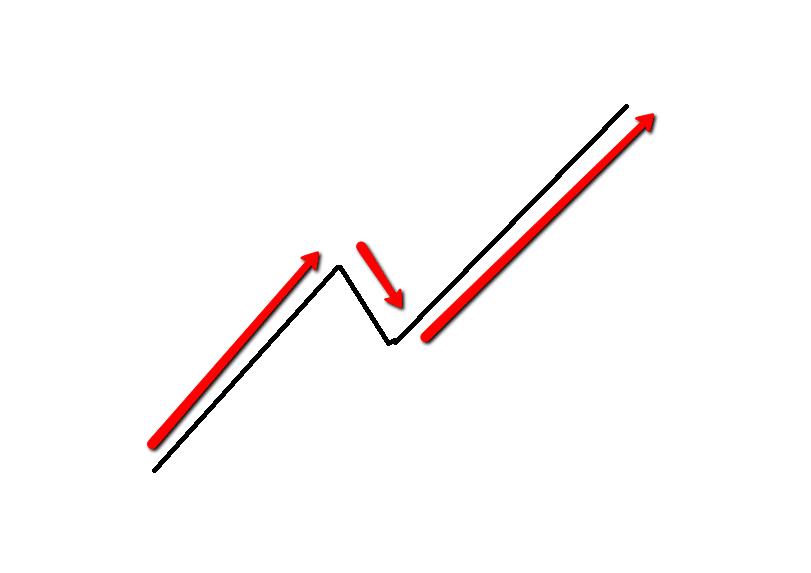
How To Use The Bollinger Band Indicator
Bollinger Bands are well known in the trading community. You can get a great Bollinger Band formula with a simple trading strategy.
They were created by John Bollinger in the early 1980s. The purpose of these bands is to give you a relative definition of high and low. So in theory, the prices are high at the upper band and low at the lower band. Bollinger Bands include three different lines, the upper, middle, and lower bands. The middle band basically serves as a baseline for both the upper and lower.
They are mainly used when determining when there are overbought or oversold levels. Selling when the price touches the upper band and buying when the price touches the lower band.
The spacing between the lower, upper, and middle bands is determined by volatility. The middle band consists of a 20-period moving average. The upper and lower are two standard deviations below and above the moving average in the middle.
Standard deviation is a statistical measure that offers a great reflection of price volatility.
When you see the band widen that simply means that there is volatility at that time. When the price moves very little, the band will narrow which means that there is little volatility.
I prefer to use this trading strategy using the 1-hour or 4-hour time chart. You can adjust according to what style of trader you are. But the example I will show you will use the 4-hour and 1-hour time chart.
Before we start looking at the rules of the strategy, let’s take a look at Bollinger bands. Let’s see what they will look like on a chart if you have never used this type of indicator in the past:
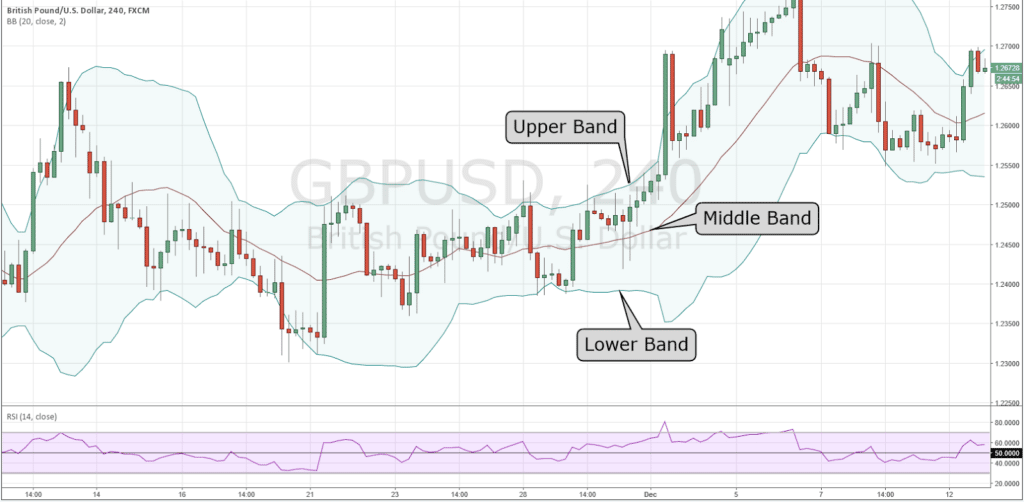
Next…
Let’s see which indicator works best with Bollinger Bands.
See below:
Best Indicator to use With Bollinger Bands Bounce Trading Strategy
The best combination of technical indicators is the RSI – a momentum indicator with Bollinger Bands – a trend-following indicator.
The Bollinger Bands RSI is a magical combo to time entries with your favorite currency pair.
After examining the picture, it may seem wise to buy every time the price hits the lower band. Or, on the other hand, sell every time the price hits the upper band. This can technically work but is a risky way of trading. Sometimes strong trends will ride these bands and end up stopping out many unfortunate traders who try to it.
This is why we are using the RSI indicator to help confirm and trade the “bounce” of an upper or a lower band. Also, read about how bankers trade in the forex market.
The RSI indicator is used in this strategy to see how the currency is weakening or strengthening. (Tap here for another RSI trading strategy article).
These indicators should come standard on your trading platform. There is no need to adjust these, as we will use the default settings. Here you can learn How to fade the momentum in Forex Trading.
I would suggest drawing a horizontal line on the 50.00 level in the RSI indicator before starting. You will find out exactly why soon.
Trading Indicators Used with the Bollinger Bands Bounce Trading Strategy:
- Bollinger Bands (20, 2)
- RSI (Relative Strength Index) Indicator (14)
Bollinger Bands Best Settings
John Bollinger recommends using settings of 9 – 12 based on a 2 standard deviation. By default, the Bollinger Bands period is set at 20 and StdDev at 2.
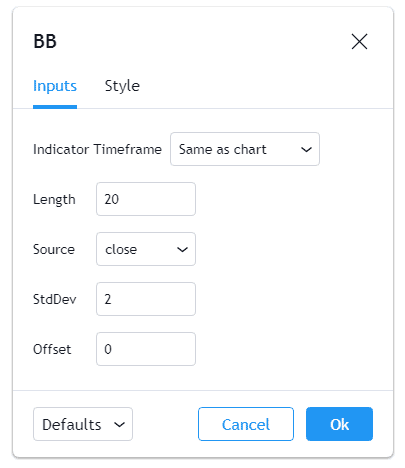
However, the Bollinger Bands Bounce Trading Strategy settings can be modified to suit your trading needs.
For example, a scalper would need to adjust the BB settings to a short-term period. This will make the BB indicator more sensitive to short-term price action.
In this case, the best Bollinger bands settings for scalping are 9 periods and 2 StdDev.These are also good Bollinger Band settings for a 5-minute chart.
How to follow Bollinger Bands Bounce Trading Strategy
There are many different ways to trade Bollinger Bands from trend continuation to reversal, range trading, volatility breakouts or swing trading, and day trading.
The use of Bollinger Bands varies among traders depending on the trading style implemented.
If you’re a day trader, you need to make the best of the Bollinger Bands on the intraday charts. However, swing traders need to buy low and sell high.
But the question is how can day traders and swing traders use the Bollinger Bands and both make money?
The Bollinger Bands provide something for both traders.
See below:
Bollinger Bands Strategy For Swing Trading
The best swing trading opportunities usually come after the upper and lower Bollinger bands come closer together. When the upper and lower bands come closer together it means the price is ranging.
This is often the result of decreased volatility.
As a general rule, one of the basic principles of price action states that low ranges are always followed by large price ranges.
This means that when the Bollinger bands squeeze (or move closer together), the price tends to make a big move in either direction. The longer the BB squeeze, the higher the probability the price will eventually penetrate one band or the other.
Now, here is an unorthodox way to play these swing trading opportunities:
Look at the “hooks” of the outer bands.
Let me explain:
If one band is pointing in one direction (i.e. up) the other band must point in the opposite direction (i.e. down) to confirm a swing trading opportunity.
Here’s what I mean:
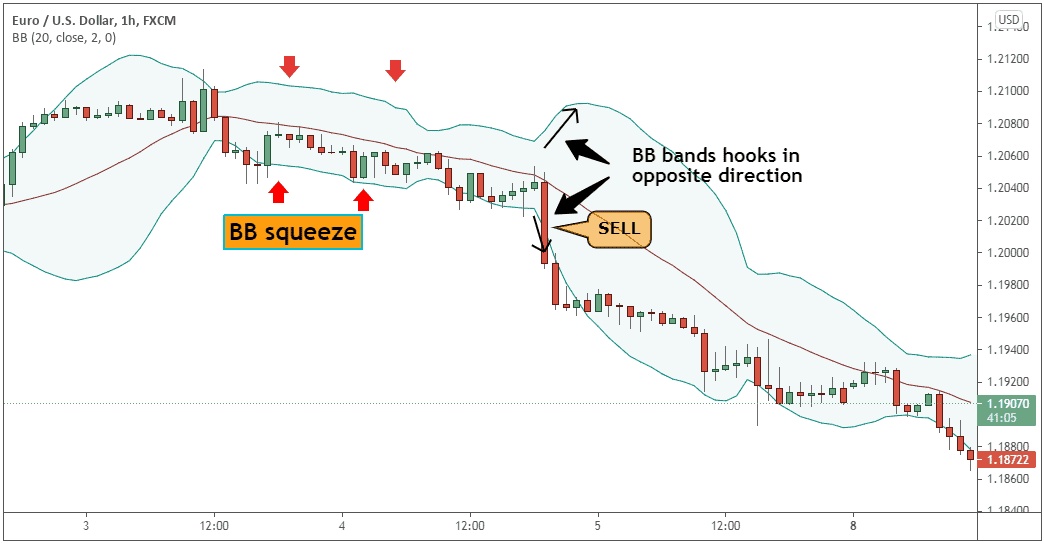
Note* If only one band hooks while the other band remains flat, we don’t have any swing trading opportunity.
The swing trade entry is done in the direction of the breakout.
Before we move forward:
Here is another way swing traders can use the BB indicator: Bollinger Bands swing trading strategy.
Next, we’ll look at another Bollinger bands trading strategy for day trading
See below:
Bollinger Bands Strategy For Day Trading
A little-known technique is the double Bollinger bands trading strategy. With this trading method, day traders can pinpoint entries and exits with ease.
Now, you’re probably wondering:
What is a Double Bollinger Band strategy?
As the name suggests the double Bollinger bands strategy uses 2 Bollinger bands instead of just one. This means that the buy and sell signals are two times more powerful.
Both Bollinger bands have the same period the only difference is the standard deviation settings:
- The first BB uses 2 standard deviations
- The second BB uses 1 standard deviation
This means that we’ll have two additional bands above and below the central band.
See the Forex chart below:
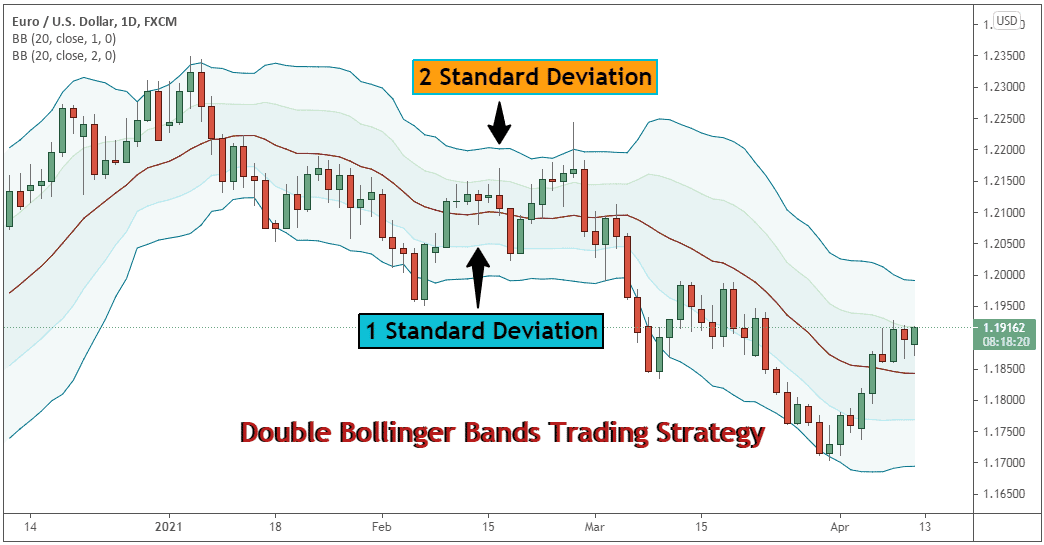
Now…
It’s important to know that most prices are contained within one and two standard deviations.
This means that the price zone created between the 1 and 2 standard deviations can trigger many buy and sell signals.
This brings us to the next section.
See below:
How to trade with Double Bollinger Bands
There are two ways one can use the double Bollinger Bands, which involves trading intraday reversals or trend continuations.
Now, here are the rules for trading trend reversals:
- Buy if the price trades between the lower 1 and 2 standard deviations (the upper and lower BB need to be flat).
- Buy if the price trades between the higher 1 and 2 standard deviations (the upper and lower BB need to be flat)
On the other hand, if the price seems encapsulated between 1 and 2 standard deviation and moving upwards or downwards, we want to trade in the direction of the intraday trend.
Here is what I mean:
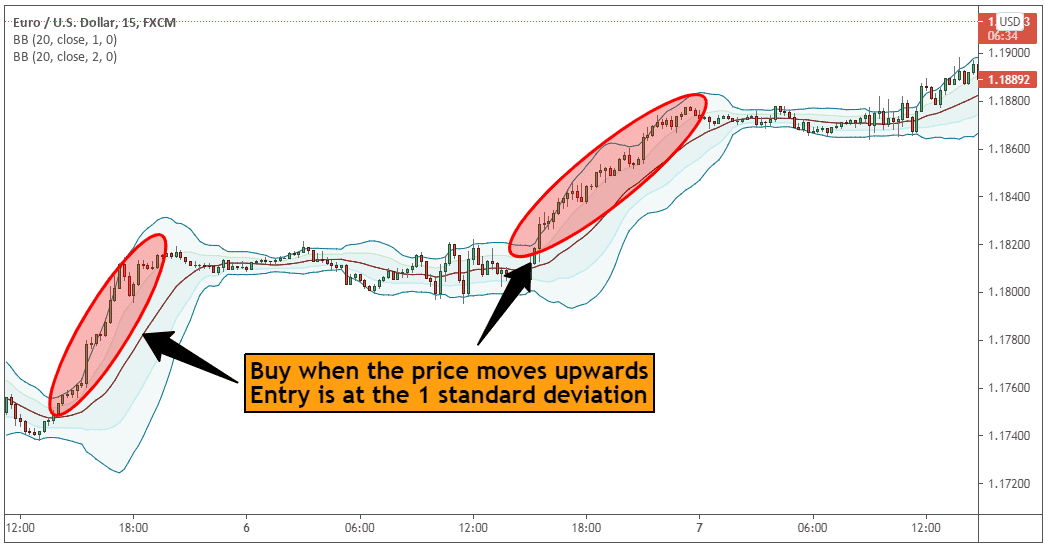
How to Buy Low and Sell High
In theory, Bollinger Bands will contain all trading activity that occurs within 2 standard deviations of the expected norm (the trend line).
This means that about 90-95% of price movements will occur within this range.
Bollinger Band traders are looking for instances of resistance and support. Instances of support occur when the demand has become “concentrated” and a downward trend is likely to lose momentum. On the other hand, instances of resistance occur when an upward trend is “condensed” and will likely reverse downward in the near future.
Bollinger Bands make it easy to buy low and sell high. Traders will open a position when the trend line is nearing the bottom of the Bollinger Band range. Traders will need to close a position when the trend line reaches the top of the range.
Rules for Bollinger Bands Bounce Trading Strategy
*To make it simple, I am going to use the same (GBPUSD 4-hour chart) example for each of these rules. This trade would have been a “BUY” trade. The rules are the same concept only the exact opposite for a SELL trade. The currency is in an uptrend and then it will pull back to the lower Bollinger Band. From there, if it follows the rules, we will execute a trade.
Rule #1: Find a currency that is in an Uptrend/Downtrend.
Finding a trending market is very simple. You can use price channels, trend lines, Fibonacci lines, to determine a trend. Find higher highs or lower lows and place a trend line on them. If the line is going up, it is an uptrend, if it’s going down, it is a downtrend. It needs to be trending up or down, not a sideways trend.
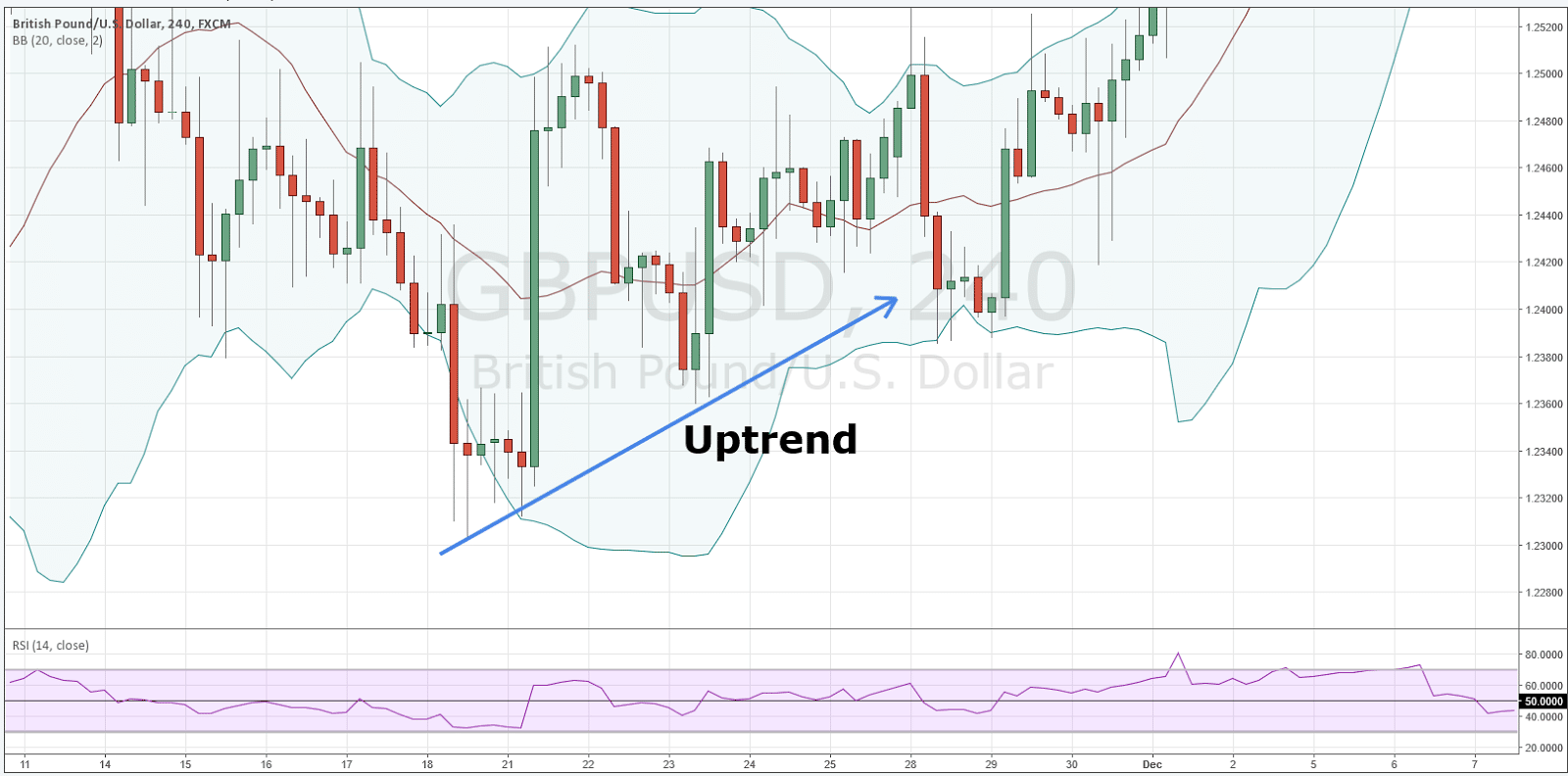
Rule #2: The currency must fall back (from the uptrend) and almost touch the bottom band.
When I say “Almost touch” an example would be something like this
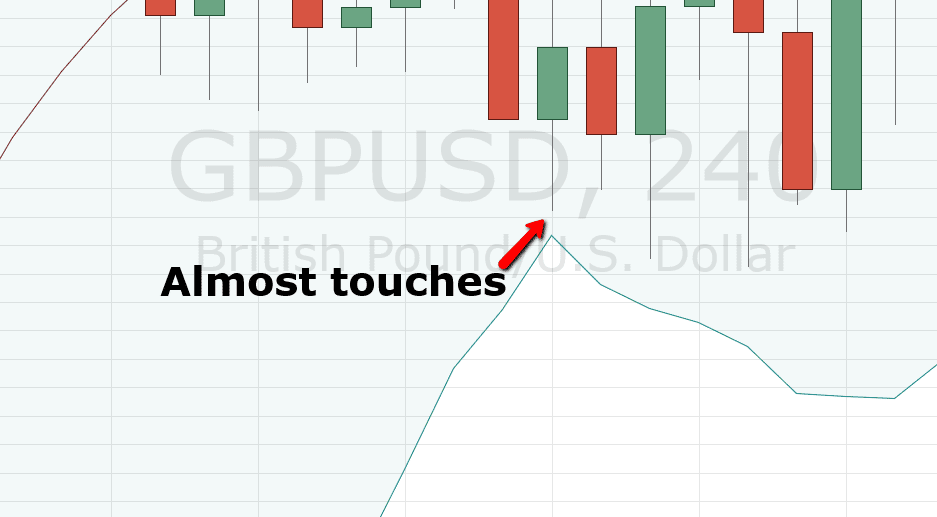
**Bollinger Band trading tips: If it is any more than 5 pips away then I would not consider this validated, and I would wait for it to come closer to the bottom/top band.
As you can see in the example the price came all the way back down, from the uptrend, and touched the bottom band.
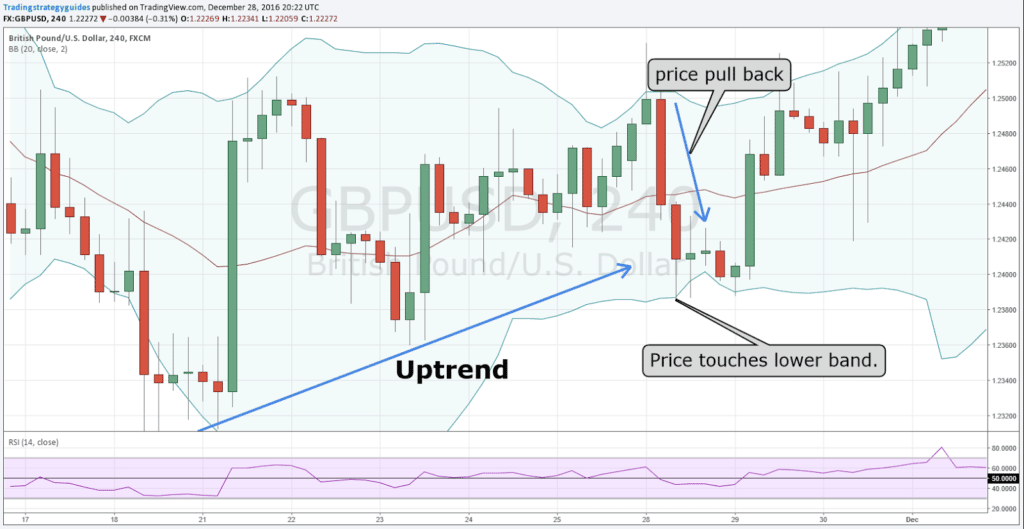
Once the price touches the bottom or top band, look at the RSI indicator for confirmation.
Rule #3: Once the Price hits the lower Bollinger Band, look at the RSI indicator and it should be between 30-50 and be rising.
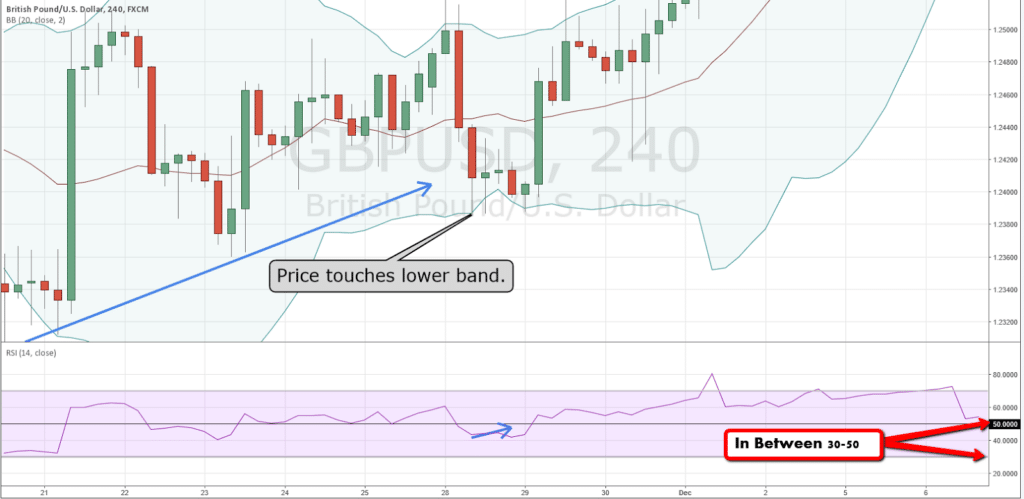
The price hit the Bollinger Band, the RSI (when the price touches the bottom band) needs to be between 50 and 30. If it is not here, and let’s just say it was at the 80 mark, then you wouldn’t be interested in trade.
You want to see the RSI go up, in this case, in the direction of the trade. Remember that it should be in between the 30-50 mark. (In a sell trade the RSI would need to be in between the 50-70 mark and going downward.)
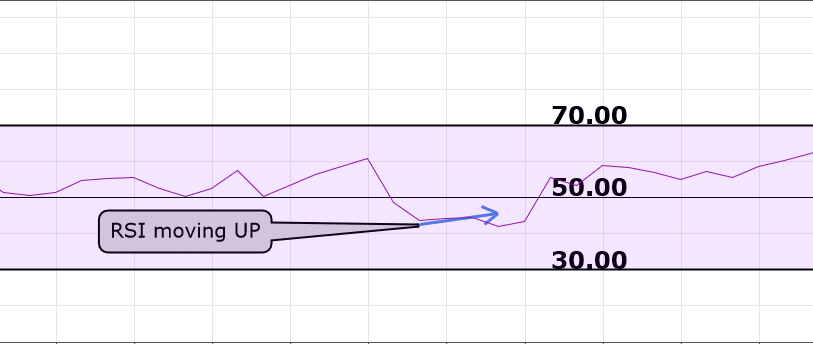
Once you see this movement you go ahead and look for an entry.
Rule #4: After the price hits the lower Bollinger Band, and RSI is going upwards, make an entry when…
You can make an entry when you see a STRONG BULLISH candle to the upside, consecutive reversal candles to the upside, or you find a bullish pattern forming. You need to see that the trend is moving upwards, in this case, before you enter a trade.
If the candlesticks are moving to a point where it is making a new low, this would not be a good time to enter a trade. However, once the candles fail to make a new low, watch to see if it forms a bullish formation. Here is an example of a master candle setup.
In this example, I bumped down to a one-hour chart to make an entry. This is perfectly fine to do. This could give you a more accurate place to make an entry point. As I said, the 4-hour and 1-minute time frames are the preferred time frames for this strategy. Yes, there is less of an opportunity for a trade, but the signals are very strong when you are in a higher time frame.
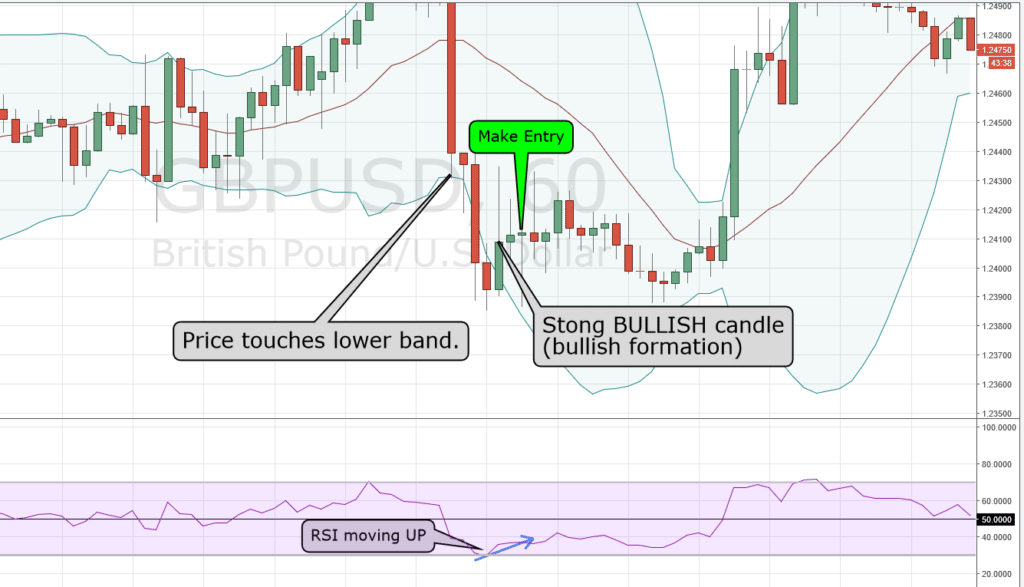
Rule #5: Stop Loss / Take Profit Target
Always remember to be placing a stop loss, and having a good target area. With this strategy, we recommend using a 30-50 pip stop.
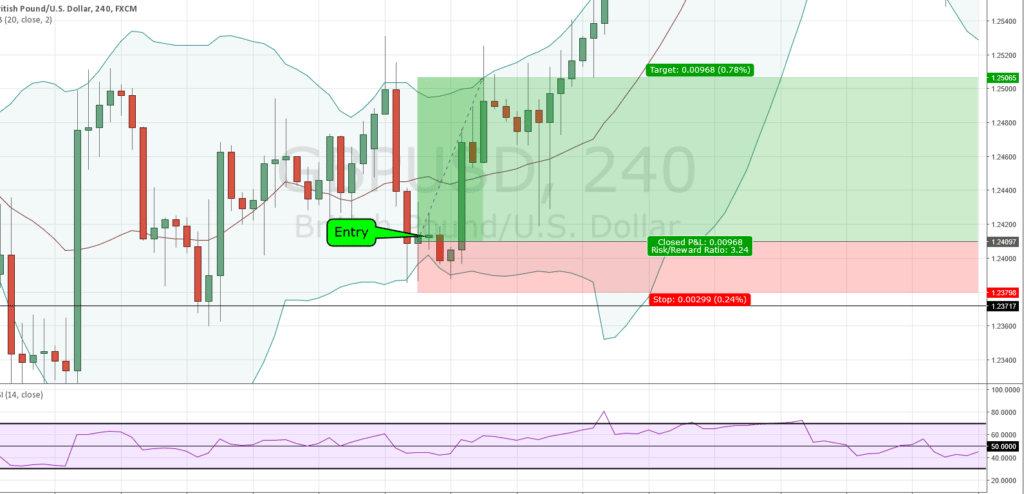
Your take profit can be when the price touches the other Bollinger Bands.
Best Bollinger Bands Settings Strategy Frequently Asked Questions
What is the Bollinger Bands Bounce trading strategy?
The Bollinger Bands Bounce trading strategy is a technique that uses the Bollinger Bands indicator to identify potential trading opportunities. The strategy involves buying when the price of an asset falls below the lower Bollinger Band and selling when it rises above the upper Bollinger Band.
How does the Bollinger Bands indicator work?
The Bollinger Bands indicator is a technical analysis tool that consists of three lines: a simple moving average (SMA), an upper band, and a lower band. The SMA represents the average price of an asset over a specified period of time, while the upper and lower bands represent the standard deviation of the price from the SMA. The bands expand and contract based on the volatility of the asset.
What are the best settings for the Bollinger Bands indicator?
The best settings for the Bollinger Bands indicator depend on the trading style and the asset being traded. However, the default settings of a 20-period SMA and 2 standard deviations are commonly used as a starting point.
What are the benefits of using the Bollinger Bands Bounce trading strategy?
The Bollinger Bands Bounce trading strategy can help traders identify potential buying and selling opportunities based on the price movements of an asset. This can be particularly useful in volatile markets where assets tend to move quickly and unpredictably.
What are the risks of using the Bollinger Bands Bounce trading strategy?
As with any trading strategy, there are risks associated with the Bollinger Bands Bounce trading strategy. One of the main risks is false signals, where the price of an asset may briefly cross over the upper or lower band but then continue in the opposite direction. Traders should also be aware of the potential for market volatility and unexpected price movements.
How can I use the Bollinger Bands Bounce trading strategy for day trading?
The Bollinger Bands Bounce trading strategy can be used for day trading by identifying potential buying and selling opportunities within a single trading day. Traders can use shorter time frames, such as 5-minute or 15-minute charts, and adjust the settings of the Bollinger Bands indicator accordingly.
What are the best settings for the Bollinger Bands indicator for a 5-minute chart?
The best settings for the Bollinger Bands indicator for a 5-minute chart may vary depending on the asset being traded and the trader’s preferences. However, a common starting point is a 20-period SMA and 1 or 1.5 standard deviations.
What are the best settings for the Bollinger Bands indicator for a 1-minute chart?
The best settings for the Bollinger Bands indicator for a 1-minute chart may also vary depending on the asset being traded and the trader’s preferences. However, a common starting point is a 20-period SMA and 0.5 or 0.75 standard deviations.
What are the best settings for the Bollinger Bands indicator for a 15-minute chart?
The best settings for the Bollinger Bands indicator for a 15-minute chart may vary depending on the asset being traded and the trader’s preferences. However, a common starting point is a 20-period SMA and 2.5 or 3 standard deviations.
Final Thoughts: Bollinger Bands Best Settings Strategy
The Bollinger Bands are a great indicator to use in any market. When you combine these with the RSI indicator, it should give you great entry points for the Bollinger Bands Bounce Trading Strategy. Here is another strategy called trading volume in Forex.
Something else you can consider is when the price touches the middle band. You can make a second entry to press your winners. This can potentially give you double the profit.
With this strategy, we only use the one trade that we initially make. But if your rules allow you to make multiple trades at a time with the same currency pair, then you may consider adding a second position at the middle line.
Thanks for reading,
Please leave a comment below if you have any questions about Bollinger Bands Bounce Trading Strategy!
Additional Reading
- Beginner Guides
- Brand new to trading? Then you don’t want to miss What Is Trading, a guide to understanding how markets work.
- Our Forex Trading for beginners will get you well on your way to becoming a pro!
- All beginners need to learn about risk in the markets, and planning their trades please don’t overlook the need to learn Sharpe Ratios, Entry Methods, and Trading Plans.
- Advanced Guides
- Do you consider yourself an expert trader, or at least on your way there? Then maybe you are ready to start your own business and become a prop trader! Our in-depth guides will prepare you for every aspect of becoming a professional prop trader. Read our overview of prop trading guide, and how to pass a prop test.
- Want to learn a great day trading strategy? Then you need to read our Best Day Trading Strategy
Bollinger Bands Strategy Video
Bollinger Bands Best Settings Strategy Guide Download
Follow the link to Download the Bollinger Bands Strategy Guide.
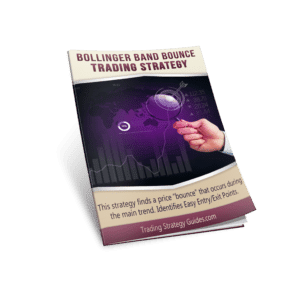
Bollinger Bands Best Settings Strategy PDF
Like this Strategy? Grab the Free PDF Strategy Report that includes other helpful information. Including more details, more chart images, and many other examples of this strategy in action!
Please Share this Strategy Below and keep it for your own personal use! Thanks, Traders!
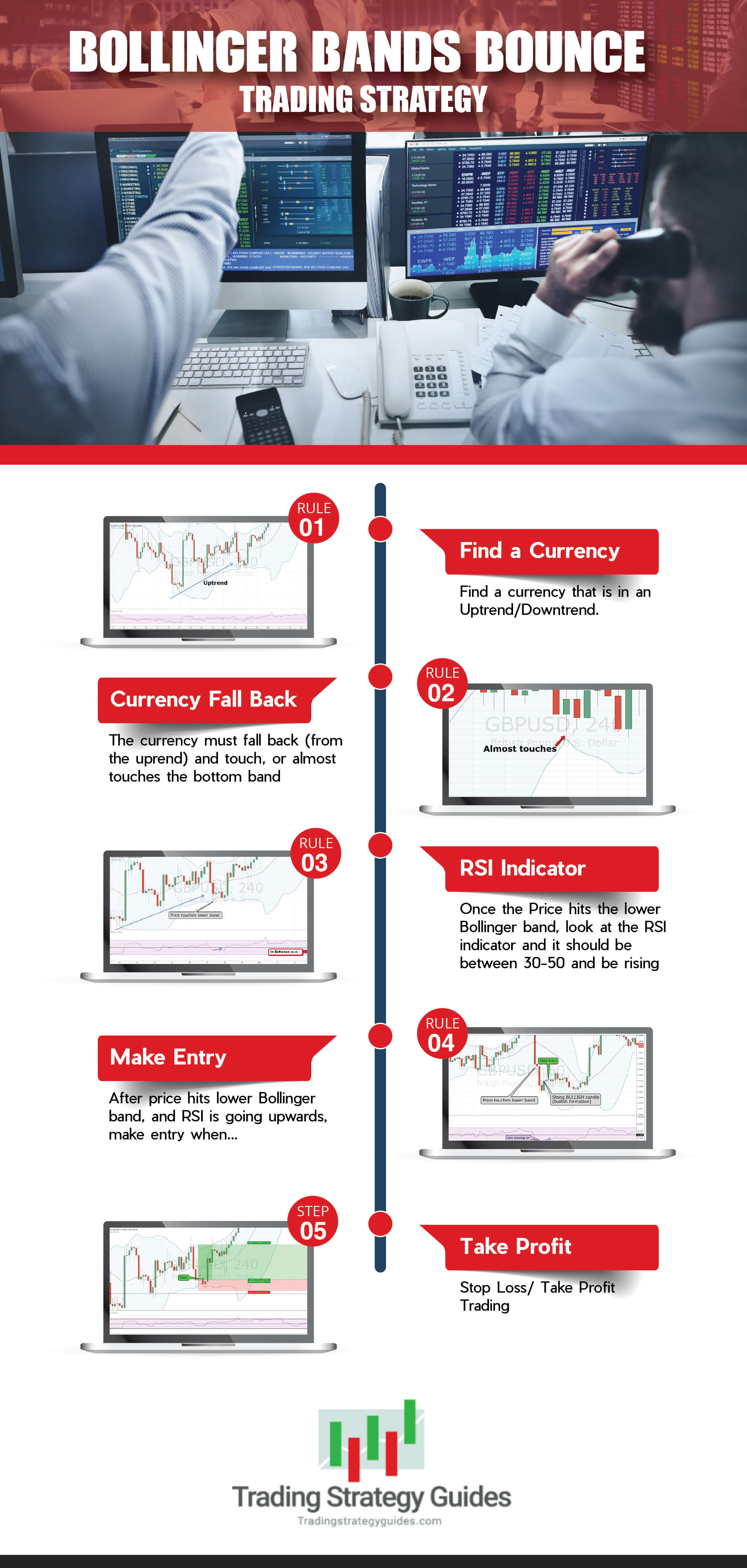

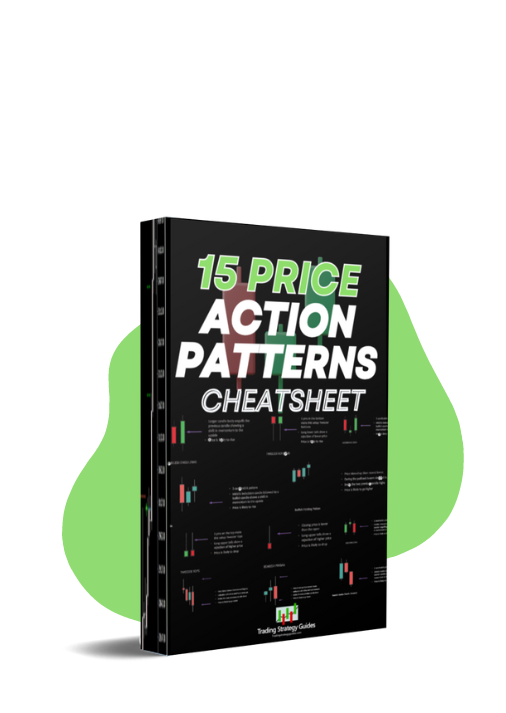



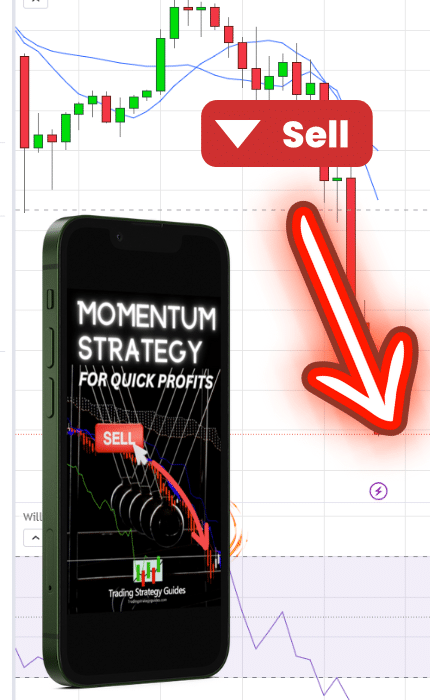

Does it work for scalping too? If so what time frame I should be looking at?
Thanks
Yes this can work as a scalping strategy. Really the time frame is all depending on how you trade. Entry areas can be seen in the 1 minute time frame, just as they can be found on a 4 hours chart.
Great article, I learned a lot. What say you about the HULL moving average, do you use it at all?. I’d love to know your HULL strategy if you have one….Thanks ….Ron
Nice it should work well, it is the timing
Yes, timing is key. Many people fail to wait for trades to develop and end up getting in too early or exiting to quickly. Stay sharp and develop a strict set of rules to follow. You may not always win, but the key is to press your winners, follow your rules, and learn from your past mistakes. 90% of traders fail to do that, which is why they end up struggling.
excellent strategy thanks for sharing
No problem, Todd.
This website has the best strategies. Keep up the good work.
We try our best to give the best available strategies to traders around the world. Thanks for the positive feedback!
I learned yr strategy, thanks to u
Great to hear!
very good
I’ve traded ETFs most of my life and have never traded currencies. Can you tell me where to find a good overview of the advantages and disadvantages of currency trading?
Also, would it make sense to place a stop loss just below the lowest recent price bar and exit the trade when th price bars fall blow the upper Bollinger Band and start going horizontal?
Thanks,
Phil Musgrave
Hi Philip, there are many great advantages of trading currency. Go ahead and check out this article https://tradingstrategyguides.com/advantages-of-the-forex-market/ and this will give you an overall good overview. We could probably write a book on both, but I would a “disadvantage” if you would want to call it that is that you can lose it all very quickly if you are not educated. You simply cannot jump into currency trading and expect to double your account in a day or two. It takes a lot of time to perfect your trading which is why we always say to start out with a demo account and learn from proven, professional Forex traders.
great . i really like this. basically i am a scalper always in search of new ideas in forex. i also use RSI with ADX and SMA for short trades . i really give a try to this one also
Great to hear! This strategy is great for scalping.
How applicable is this strategy with stocks ? And if so , Are there any “scan “services for stocks and /or ETFS that meeting this strategy criteria?
Dr Silver MBA
Way cool! Some extremely valid points! I appreciate you writing this post and also the rest of the website is also really good.